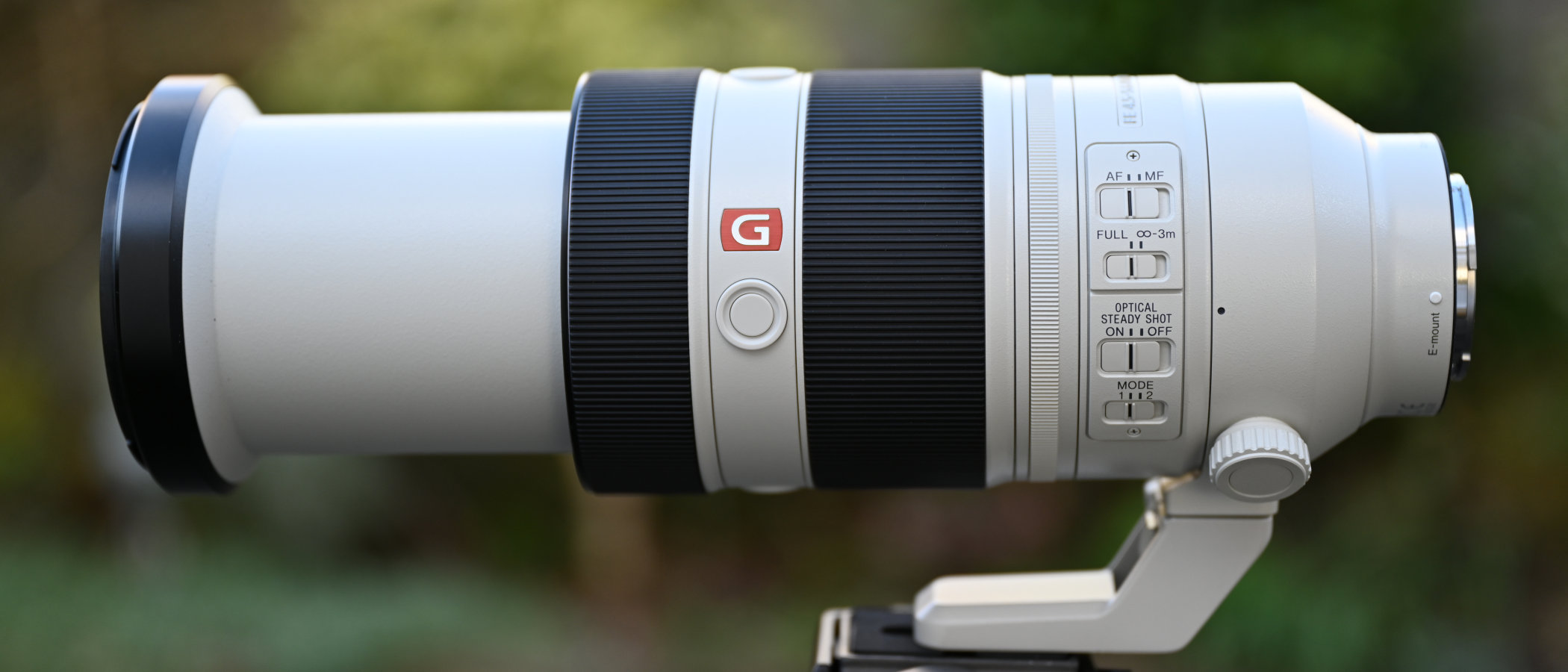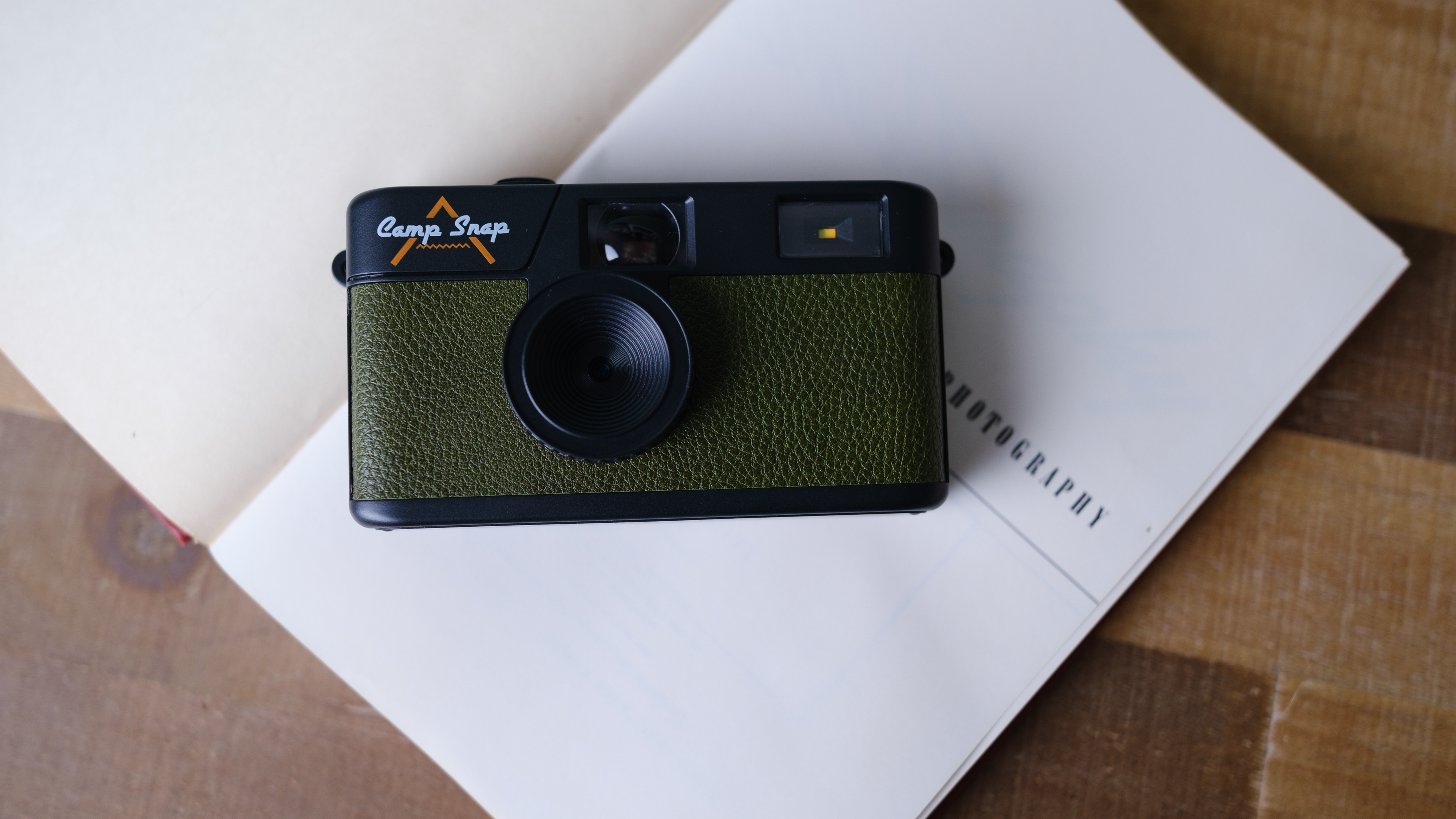Digital Camera World Verdict
A sophisticated lens with refined handling characteristics, this is so far the only super-telephoto zoom in Sony’s acclaimed G Master line-up of top-grade lenses for E-mount mirrorless cameras. As such, it’s designed to combine excellent sharpness with soft and dreamy bokeh, and succeeds in its aims. That’s despite a modest aperture rating of f/4.5, shrinking to f/5.6 towards the long end of the zoom range. The size and weight are easily manageable for a super-tele zoom but it’s pretty pricey to buy.
Pros
- +
Great sharpness and contrast, with nice bokeh
- +
High-end handling characteristics
- +
Compatible with 1.4x and 2x tele-converters
Cons
- -
Pricey to buy
- -
Lacks the reach of Sony’s FE 200-600mm zoom
Why you can trust Digital Camera World
There’s no denying the versatility and usefulness of a 70-200mm f/2.8 zoom but you can often find yourself coming up short in telephoto reach. One answer is to add a 2x tele-converter but that’s generally a poor substitute for stepping up to a purpose-built super-telephoto lens. This 100-400mm lens is so far the only super-telephoto zoom in Sony’s G Master stable. As such, it delivers a classic range of powerful telephoto focal lengths, along with a typical variable aperture rating of f/4.5-5.6.
Specifications
Model number: SEL100400GM
Mount: Sony E (full-frame)
Full frame: Yes
Autofocus: Yes
Image stabilization: Yes
Lens construction: 22 elements in 16 groups
Angle of view: 24-6.2 degrees
Diaphragm blades: 9
Minimum aperture: f/32-40
Minimum focusing distance: 0.98m
Maximum magnification ratio: 0.35x
Filter size: 77mm
Dimensions: 94x205mm
Weight: 1,395g
Key features
Like many of Canon’s big-gun telephoto lenses, the Sony is finished on off-white, which helps deflect bright sunlight and reduce the build-up of heat in the lens’s large surface area. That said, the lens is reasonably compact at its shortest focal length, measuring 94x205mm, although the inner barrel (also off-white) extends considerably as you stretch through to the longer end of the zoom range. The weight is entirely manageable for long periods of handheld shooting, at 1,395g, although the lens does come complete with a tripod mounting ring, which has a detachable foot.
While the size and weight are ideal for handheld shooting, the combination of a 400mm focal length and f/5.6 aperture can make camera-shake an ever-present danger. With that in mind, the lens is fitted with Optical SteadyShot image stabilization, which works with all Sony E-mount APS-C format and full-frame camera bodies. Furthermore, the optical stabilizer can work in tandem with later E-mount camera bodies that feature IBIS (In Body Image Stabilization).
The optical path includes 22 elements in total, divided into 16 groups. These include two ED (Extra-low Dispersion) elements and one Super ED element, to maximise sharpness and contrast while reducing chromatic aberrations.
Autofocus is handled by the combination of a double linear motor and DDSSM (Direct Drive Super Sonic Motor), which drive different groups of moving elements. The aim is for super-fast autofocus performance with a consistent, high degree of accuracy.
Build and handling
Magnesium alloy components help to keep the weight down while adding toughness and rigidity. The construction also features plentiful weather-seals, often seen as essential among sports and wildlife photographers. The lens also features a moisture- and grease-resistant fluorine coating on its front element. The supplied hood is thoughtfully designed, with a locking mechanism and sliding window for accessing a fitted circular polarizing filter.
Handling is impeccable. Between the two smoothly operating focus and zoom rings, there’s a bank of three customisable buttons, nominally assigned to a focus-hold function. Behind the zoom ring there’s an additional ‘zoom smoothness’ ring, with which you can adjust the torque required to adjust the zoom setting. Towards the rear of the lens is a bank of switches that includes AF/MF focus modes and an autofocus range limiter that locks out the close end below 3m. Two Optical SteadyShot switches are also fitted, one for on/off and the other for selecting static or panning modes.
Performance
Sharpness and contrast live up to our high expectations for G Master lenses, as does the quality of bokeh. More importantly for a telephoto lens with a modest aperture rating, sharpness remains very impressive when shooting at the widest available apertures throughout the entire zoom range, with only a fairly small drop-off towards the longest zoom setting.
Autofocus is very rapid and ultra-quiet, as promised, although the Optical SteadyShot system only gave an effectiveness of around two stops in our tests, mounted on a first-edition A7 body that lacks IBIS. Color fringing and distortion are fairly minimal and resistance to ghosting and flare is very good. Overall, performance is highly impressive, befitting a G Master lens.
Sample images










Lab tests
We run a range of lab tests under controlled conditions, using the Imatest Master testing suite. Photos of test charts are taken across the range of apertures and zooms (where available), then analyzed for sharpness, distortion and chromatic aberrations.
We use Imatest SFR (spatial frequency response) charts and analysis software to plot lens resolution at the centre of the image frame, corners and mid-point distances, across the range of aperture settings and, with zoom lenses, at four different focal lengths. The tests also measure distortion and color fringing (chromatic aberration).
Sharpness:
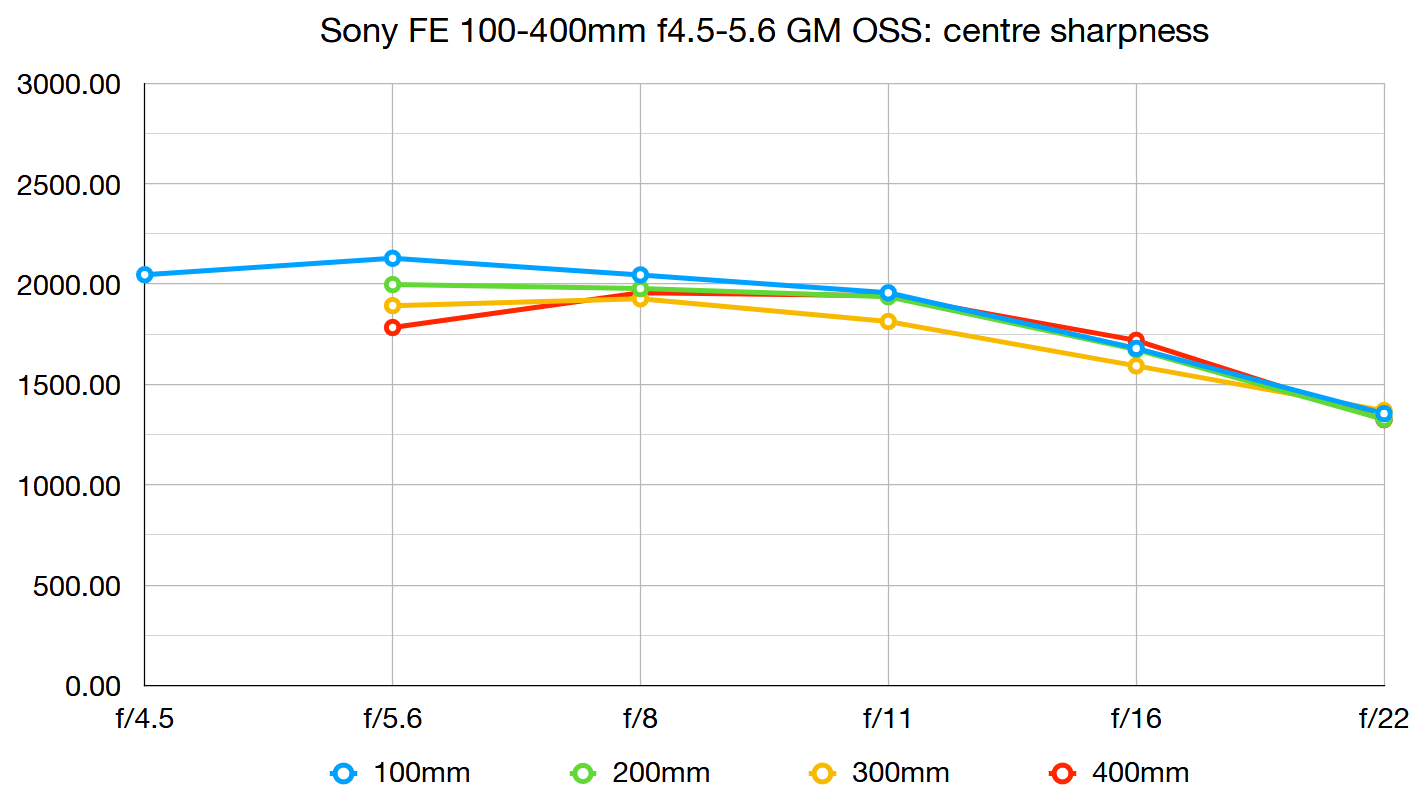
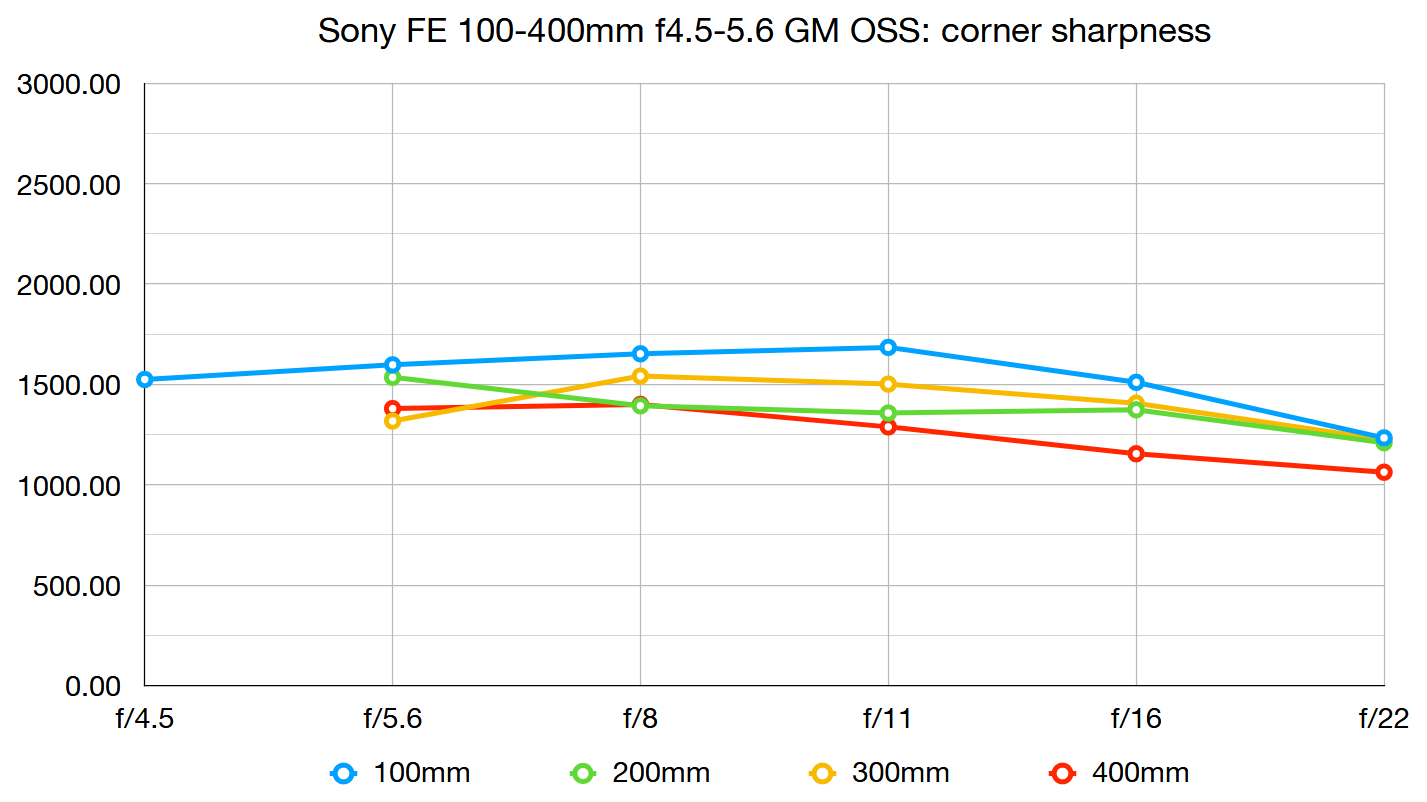
Levels of sharpness are very good across the whole image frame, even when shooting at the widest available apertures, although centre-sharpness drops off a little at the longest zoom setting at f/5.6
Fringing:

Color fringing creeps up a little towards the extreme corners of the image frame at both ends of the zoom range, especially when shooting at wide apertures, but it’s very minimal on the whole.
Distortion:
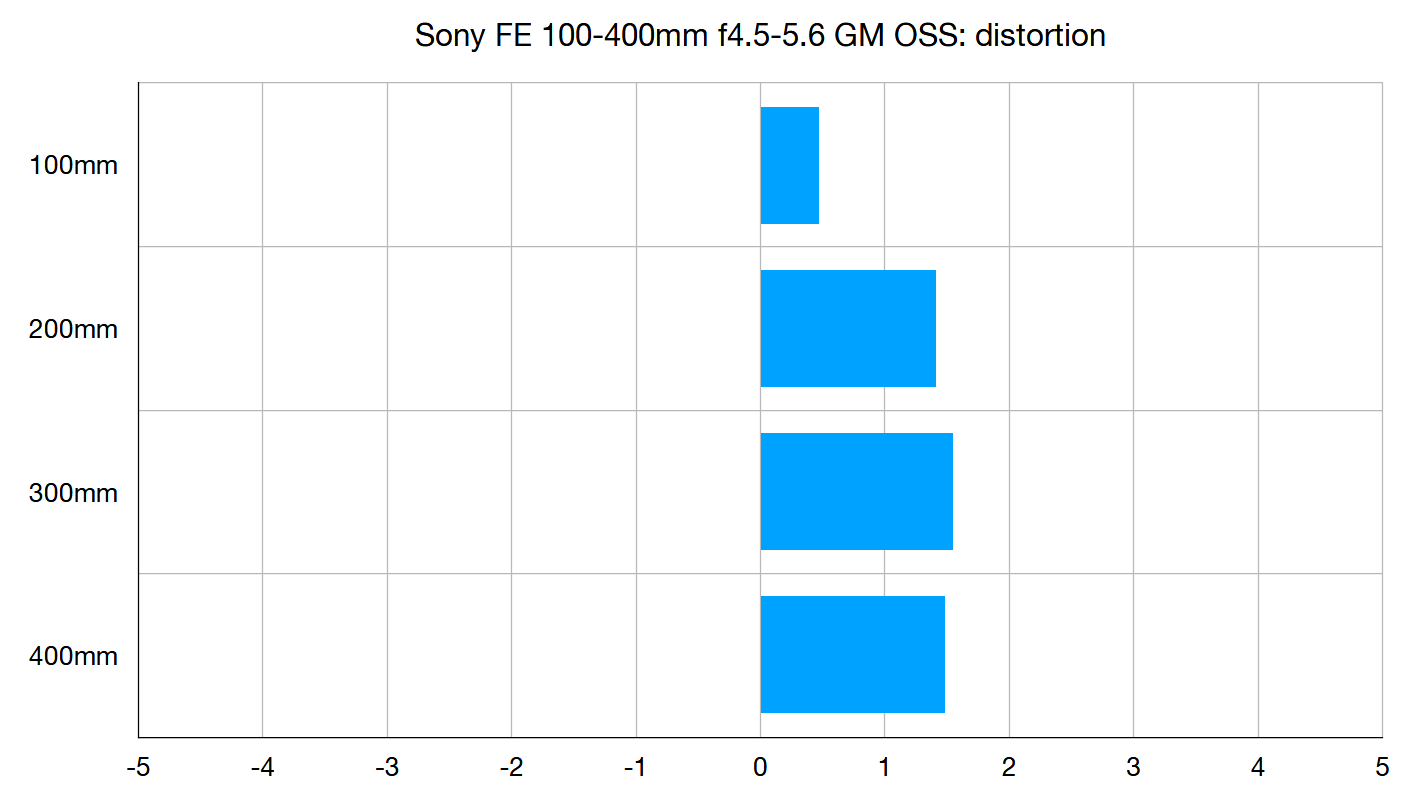
There’s a little pincushion distortion at all focal lengths but it’s of a low order and of a very consistent amount in the 200-400mm sector of the zoom range.
Verdict
The Sony FE 100-400mm packs powerful telephoto reach into a reasonably compact and lightweight package. The premium weather-sealed construction uses high-grade magnesium alloy and the lens is impeccably finished. Customizable focus-hold buttons and adjustable zoom torque enhance handling. Autofocus is fast, whisper-quiet and consistently accurate. All in all, it’s a potent lens that delivers superb image quality, but it’s pretty pricey to buy.
Read more:
Matthew Richards is a photographer and journalist who has spent years using and reviewing all manner of photo gear. He is Digital Camera World's principal lens reviewer – and has tested more primes and zooms than most people have had hot dinners!
His expertise with equipment doesn’t end there, though. He is also an encyclopedia when it comes to all manner of cameras, camera holsters and bags, flashguns, tripods and heads, printers, papers and inks, and just about anything imaging-related.
In an earlier life he was a broadcast engineer at the BBC, as well as a former editor of PC Guide.
